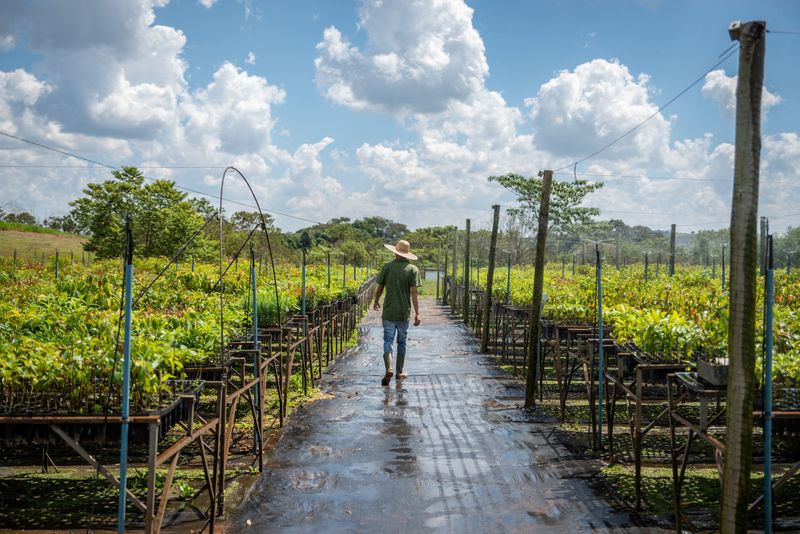
© Reuters. An arborist walks in a tree nursery in the watershed area, part of a push to restore water catchment areas and prevent droughts, near Sao Paulo, Brazil in an undated photograph. Lucca Messer/United Nations Environment Programme/Handout via REUTERS.
2/3
By Gloria Dickie
LONDON (Reuters) – The United Nations on Tuesday announced its top priorities for restoring ecosystems from South America’s Atlantic Forest to the Ganges River in India.
With countries negotiating a global conservation pact at the U.N. nature summit in Montreal, the U.N. sought to boost momentum by naming 10 flagship restoration initiatives to receive funding and scientific expertise.
Without specifying how much money might be allocated, the U.N. said it hoped to add to the funds with private donations.
Inger Andersen, head of the U.N. Environment Programme, told Reuters she hoped the initiative would demonstrate that restoration is possible. The agency estimates about 40% of the world’s land is degraded.
“You can, with a little concerted effort and some wonderful leadership at all levels of society, actually turn this around,” Andersen told Reuters.
While the COP15 negotiations aim for new conservation rules to prevent further nature loss, one of the two dozen proposed targets would see countries agreeing to restore 20% to 30% of degraded landscapes, including mountains, wetlands, deserts, and coastlines.
Altogether, the projects cover a total of some 68 million hectares (168 million acres) – an area bigger than France.
The U.N. selected its 10 projects for restoration through 2030 out of more than 150 applications. “We were looking for inspiration, we were looking for diversity, and we were looking for something that gives people hope,” said the UNEP’s Mirey Atallah, who helped coordinate the initiative.
There are efforts to regreen logged-out areas of the Atlantic Forest and clean the polluted Ganges; restore seagrass beds to protect endangered dugongs in the Persian Gulf around the United Arab Emirates; plant trees and savannahs for Africa’s Great Green Wall; and supporting traditional farming throughout drought-prone Central America.
The other five involve restoring diverse ecosystems in China, shoring up low-lying coastlines against storm surges and erosion on Indonesia’s main island of Java, building resilience in mountain communities of Europe and Africa, protecting three island nations’ corals, forests and communities, and restoring grasslands to the Kazakh steppe.
A report by the International Union for Conservation of Nature found on Monday that restoration work is currently unfolding on 14 million hectares (35 million acres) across 18 countries, carried out with $26 billion in funding.
The U.N. plans to monitor progress on the 10 projects through tools like satellite imagery, Atallah said.